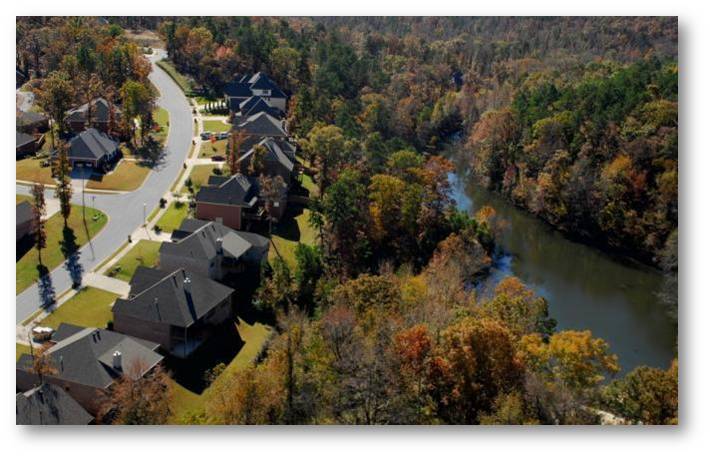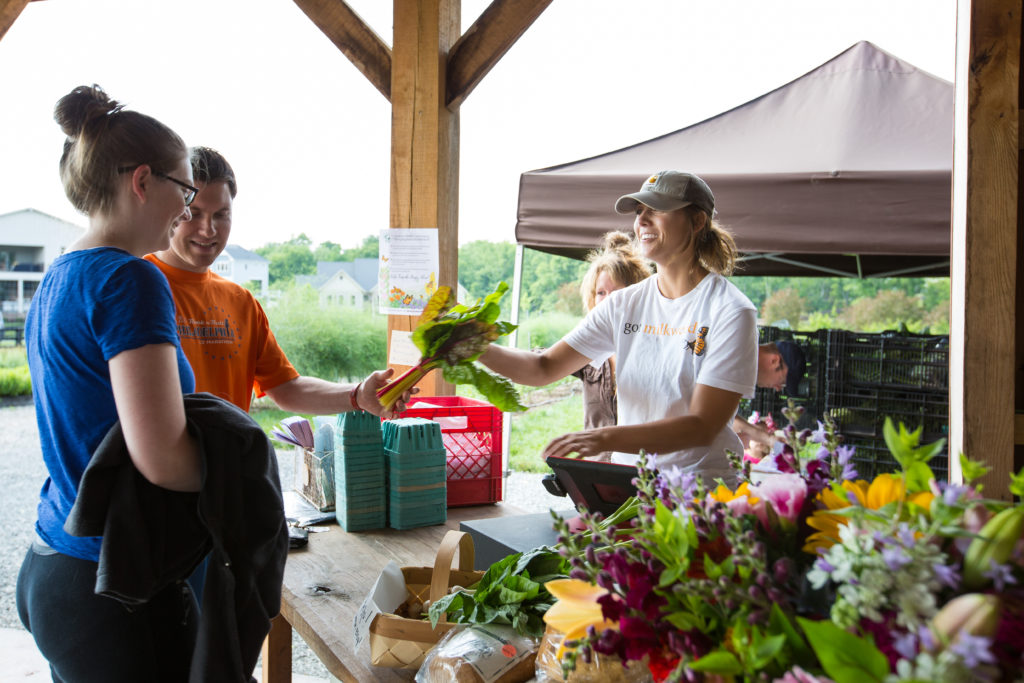A neighborhood embedded with open space provides its residents with a variety of potential uses. Civic spaces such as village greens, pocket parks, and plazas are ideal for engendering a sense of community within smaller neighborhoods. In suburban settings, there is trending interest in locally grown produce. Community Supported Agriculture (CSA) and gardens within developments stir curiosity, thus creating a social draw. Cluster developments create protected open space by grouping homes with downsized lot sizes in a portion of the development parcel, conserving natural areas on the rest of the site. Consumers have long recognized the added value of pleasant views and recreation areas procured by clustering homes.
Preservation of unbuilt land has notable effects on the local economy and quality of life. By improving an areas’ image, open space attracts tourism. A poll facilitated by the President’s commission on American Outdoors found that natural beauty was the single most important criterion for tourists in selecting outdoor recreation sites. Greenways, rivers, and trails attract visitors from outside the local area. The increase in activity stimulates the local economy via an influx of revenue from visitors. According to Randall Arendt in Rural by Design, protected open space benefits real-estate development too, because it increases the marketability of adjacent property. This is an important factor in long-term resale value and appreciation. In The Metropolis Observed, Christopher Leinberger states that there is an emerging market for cluster development based on aging baby boomers who prefer to be close to recreational activities and seek low maintenance homes and neighborhoods with a community feeling.

Cluster Ordinances
Despite zoning obstacles, cluster ordinances have been successfully implemented for almost 40 years in rural transitioning areas. They assist in preserving rural characteristics in developments located between the urban/suburban area and the agricultural zone. Cluster development involves downsizing and grouping of residential lots to increase open space on the rest of the parcel that is being subdivided. This practice is used to protect and buffer environmentally sensitive areas, to preserve important site features, or to provide recreation areas or natural open space. Developers sometimes receive a density bonus for utilizing clustering, meaning they are allowed to build more homes than what would normally be permitted by the governing zoning regulations, as an incentive for preserving more open space.

Designed Civic Spaces
Pocket Parks, village greens, and plazas foster a sense of community amidst a busy urban atmosphere. Though small, usually the size of a couple of house lots or less, they are often peppered throughout the urban environment. They include civic spaces, which are carefully designed as gathering places in the built environment. Two core benefits of civic spaces are providing visual enhancement and acting as a common meeting place for residents and for public activities. Public spaces are exceptional because they enable those who live and work in the community to experience the neighborhood and each other. Open space grants locals a valuable opportunity to enjoy a place of social interaction and relaxation in an urban setting where use of open space free of cost is virtually non-existent. Various functions include: small event spaces, play areas for children, spaces for relaxing or meeting friends, and taking lunch breaks, all of which benefit locals in the immediate vicinity.

Local Agriculture and Community Gardens
The concept of CSA unites consumers and farmers with similar ideologies into a mutually beneficial partnership. Central to CSAs, in their various forms, is a shared commitment to constructing a more equitable and locally sourced agricultural system. The operation of a CSA is financed by a community of like-minded individuals who pledge their support, creating shared ownership of the farm within the community. CSA shareholders are generally concerned with where their food is sourced and how it is produced as well as in the problems with industrial agriculture. The farmers and consumers provide mutual support and ultimately share the risks and rewards of food production. This in turn alleviates stress, and more tangibly, the risk that small farmers endure in managing a small farm. The result, a community backed food system that allows its growers to focus on land stewardship while simultaneously maintaining productive and profitable small farms.


